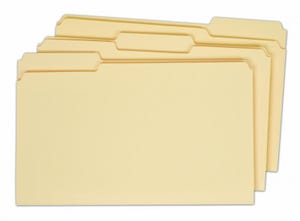While consumers have embraced cloud-based file-sync systems, IT managers have been less enthused about bringing these services into the workplace because they lack many advanced features critical to the enterprise.
September 30, 2014

 At their core, consumer-grade file sync services like Dropbox and OneDrive are more or less repositories for things people normally carry around on a flash drive, like pictures and documents. For most consumers, file sync services are a godsend.
At their core, consumer-grade file sync services like Dropbox and OneDrive are more or less repositories for things people normally carry around on a flash drive, like pictures and documents. For most consumers, file sync services are a godsend.
But while consumers have gleefully embraced these simple, easy-to-use offerings–as of May 2014, Dropbox alone had more than 300,000,000 users–IT managers have been less enthused about bringing these file sync services into the workplace because they lack many advanced features critical to the enterprise.
What features should a file sync solution have in order to meet corporate standards? There are many, but beyond the essential security measures (like enforced two-factor authentication and military encryption), three stand out. These are remote wipe, Active Directory integration and file server enablement.
1. Remote Wipe
Remote wipe is a critical feature for administrators who manage a number of users and who want to ensure the security of their data. As organizations grow larger, the risk of data loss increases, whether it’s inadvertent or malicious in nature. Employees could leave their phones or iPads in the back of a cab or at a restaurant, or, even worse, a disgruntled ex-employee with an ax to grind could delete critical emails and files using his or her corporate credentials.
Any business with sensitive data stored on multiple devices needs a way to remotely wipe that data should a device be lost or otherwise need to be decommissioned. Though remote wipe seems like a fairly simple idea, some file syncing services marketed to businesses don’t natively offer it, including OneDrive for Business and Box Enterprise. Fortunately, eFolder Anchor offers a seamless remote wipe solution, providing peace of mind to administrators that they’re in control of their data no matter where it’s stored.
2. Active Directory Integration
Microsoft’s Active Directory (AD) is a powerful tool for IT administrators to configure a number of user accounts in a single interface. From group policy to email and more, Active Directory has been adopted by millions of businesses that need to manage accounts from one pane of glass.
So what are the benefits of integrating Active Directory with a robust file sync service like eFolder Anchor? Any IT administrator would attest to the fact that creating new user accounts and credentials is a huge pain, and, as the number of services employees use increases, generating new credentials quickly becomes inefficient and unwieldy. With AD integration built right into Anchor, IT administrators can instantly provide users with their own user account to use with Anchor with just a click. Additionally, as users change their user account passwords for security purposes, Anchor’s pass-through authentication features ensure that new passwords don’t have to be regenerated for Anchor.
In short, companies with dozens, hundreds or even thousands of employees can save enormous amounts of time with eFolder Anchor’s integration with Active Directory. And, compared to a file sync utility like OneDrive for Business that lacks AD integration, there’s just no contest.
3. File Server Enablement
By now, most businesses understand the obvious advantages of file syncing: Users can have secure access to their data no matter where they are or what devices they’re using. But for businesses still using an on-premises server, moving everything to the cloud seems like a daunting challenge compared to using things the same way they’re used to.
With Anchor’s file server enablement at their disposal, though, businesses aren’t forced to change the way they work just to make their files more accessible from wherever users go. File server enablement is the best of both worlds: It allows servers to stay where they are and simply enables them for the cloud. Employees don’t have to change the way they work on local machines in the office, but anyone with another device–like a laptop or smartphone–benefits from file syncing across multiple devices.
MSPs and VARs looking for a seriously capable and robust file sync solution to rebrand for their clients should look no further than eFolder Anchor. Find out more at efolder.net.
Neeraj Periwal is marketing coordinator, eFolder. Guest blogs such as this one are published monthly and are part of MSPmentor’s Cloud-based File Syncing and Sharing Infocenter.
About the Author(s)
You May Also Like


